The “Taffy” galaxies are the results of a collision between two galaxies, UGC 813 (right) and UGC 816 (left). They were normal disk galaxies before they collided face-on at a speed of one million miles per hour about 50 million years ago. The disks of stars and dense clouds of molecular gas passed through each other relatively unharmed and are now separating. Diffuse HI gas clouds were stopped between the galaxies or thrown out in long tails, shown in blue. Disk magnetic fields are anchored by dense molecular clouds and are being stretched like bands of taffy between the galaxies as they separate. This bridge produces the radio continuum emission depicted in red.
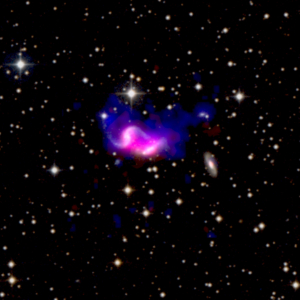
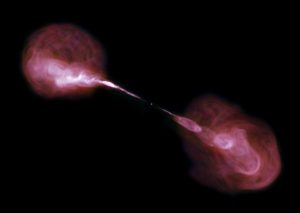
Hercules A in Radio
The Very Large Array sees fountains of hot gas erupting from a beastly black hole in the heart of a large galaxy known to radio astronomers as Hercules A. For millions of trillions of miles, these jets shoot through space, finally slowing when they reach ancient gaseous hiccups left behind by this galaxy’s earliest days of star-forming fury.
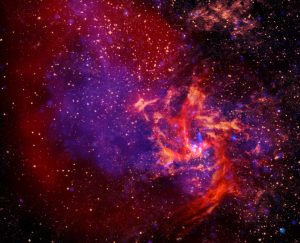
Sagittarius A
The center of our Milky Way Galaxy is anchored by a black hole that is nearly 5 million times the mass of our Sun. Surrounding it is a chaotic city of stars, gas, and dust that we call Sagittarius A. We stacked false-color X-ray, infrared, and radio images into this single picture to show you the different structures hidden inside the core of our Galaxy. X-rays (purple) radiate from the super-hot gas trapped in the black hole’s grasp. The surrounding dust is heated by friction as it chaotically orbits around the black hole and then glows in infrared light (gold). And the enormous pools and three-armed rivers of gas shine in radio light (oranges and reds) to trace the complexity of magnetic fields in this violent neighborhood.
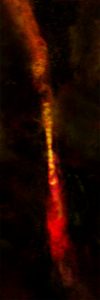
Protostar Growth Spurts
Astronomers using ALMA have imaged the episodic outflow of a young protostar known as CARMA-7. The twin jets — each nearly 2.46 trillion kilometers long — have distinct gaps, revealing that the star is growing by fits-and-starts.
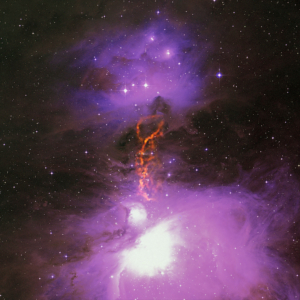
Pebble-Size Particles May Jump-Start Planet Formation
Radio/optical composite of the Orion Molecular Cloud Complex showing the OMC-2/3 star-forming filament. GBT data is shown in orange. Uncommonly large dust grains there may kick-start planet formation.
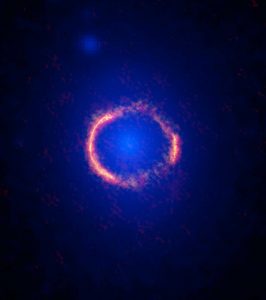
ALMA Sees Einstein Ring in Stunning Image of Lensed Galaxy
ALMA/Hubble composite image of the gravitationally lensed galaxy SDP.81. The bright orange central region of the ring (ALMA’s highest resolution observation ever) reveals the glowing dust in this distant galaxy. The surrounding lower-resolution portions of the ring trace the millimeter wavelength light emitted by carbon monoxide. The diffuse blue element at the center of the ring is from the intervening lensing galaxy, as seen with the Hubble Space Telescope.





